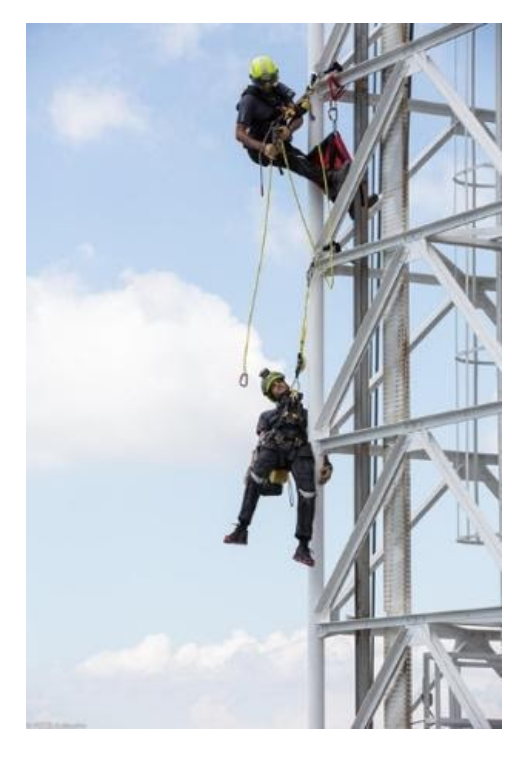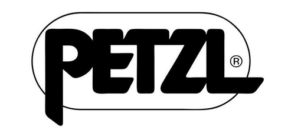
“No fall protection program is complete without a rescue plan and the rescue plan combines equipment, training and know-how,” says Goulet. The JAG Rescue Kit can be a critical factor in that equation. The kit includes the AXIS 11mm rope, CONNEXION anchor strap, JAG Pulley System, I’D EVAC descender, RING OPEN connector and BUCKET carry bag. While the items can be purchased separately, Petzl also offers them in a complete, manufactured and pre-rigged kit for ease-of-use. It’s engineered and assembled to be tamper-resistant, eliminating room for error.
During an emergency, adrenaline and tunnel vision can take over. “Climbers are under a lot of pressure,” says Goulet. “It’s very easy to lose sight of the big picture and make mistakes. You have to be careful about how you access the casualty, how you stabilize that casualty and how you transport them to the ground.”
The JAG Rescue Kit can serve climbers in several scenarios. It can aid someone who had a medical emergency in the ladder way and is hanging from a cable grab; someone who has fallen on the lanyard and is unable to self-rescue; and someone who has been injured and needs assistance descending.

Fortunately, an “anti-panic” function lives up to its namesake. If the I’D EVAC handle is pulled too hard or too far, whether due to human error or because it’s become entangled with equipment, the I’D automatically blocks the rope and keeps it from moving. Lowering can only continue when the handle is reset.
According to Goulet, the I’D EVAC is the newest Petzl descender, and its handle only has to be moved 90 degrees for the lowering to start. “This handle modification provides a more ergonomic functionality, allowing the rescuer to pull the handle against the anchor point. This provides better speed control during lowering operations when the I’D is connected directly to the anchor point,” he explains.

“We have good contacts with end-users of our products, and we’ve established a great network of key partnerships with training organizations that create our Petzl Technical Partners program,” explains Goulet. The feedback we receive from them fuels Petzl’s continued research and development for new work-at-height and rescue products, and to improve existing products.
In related news, Petzl’s recently released WIRE STROP anchor strap can be used to anchor the JAG Rescue Kit with galvanized steel cable on towers. “Galvanized steel is more cut resistant than textile anchor straps, so users may be more comfortable using that for tower work,” says Goulet.
Petzl America has Technical Sales Representatives who can be available to demonstrate products anywhere in the U.S. and Canada. It distributes products through several key Authorized Dealers in the telecom industry. For more information, visit petzl.com/US/en/Professional, or contact professionalsales@petzl.com.




Reader Interactions